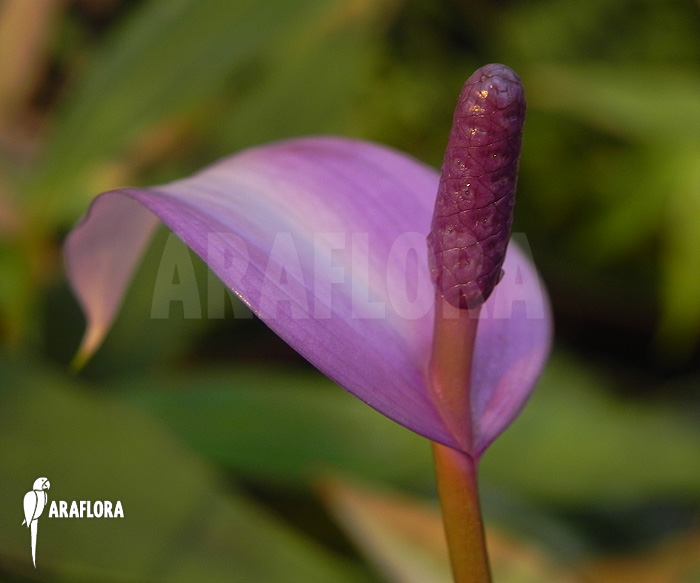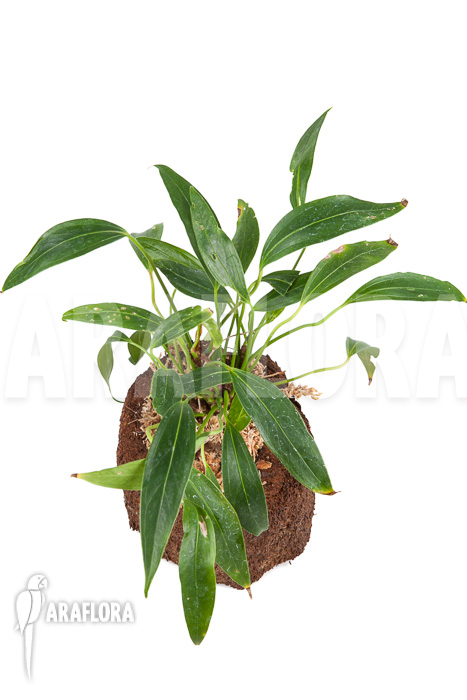Anthurium amnicola - Aroid09
Anthurium amnicola - Aroid09
Anthurium Amnicola (Tulip Anthurium) is a splendid addition to any home. Resembling an arum, it produces brightly coloured, long-lasting flowers. They are tulip-shaped with light pink and purple petals creating a dramatic visual effect. It makes an excellent indoor plant, not least because it is so easy to care for.
This product is currently still in stock
Share this plant? Press on one of the following icons.
This arum-like plant is originally from Panama in Central America where it grows as an epiphyte on boulders or rocks in or close to rivers and streams. It can grow to a height of 30 centimetres with stalked leaves as long as 11 centimetres attached to its underside. It has a relatively short root system and produces single blooms on its flower stems, each made up of a large number of tiny 3mm florets. A leaf-like bract which exists to protect the inflorescence gives Anthurium amnicola its distinctive appearance. The bract ranges in colour from pink to purple. The plant remains in bloom for an extended period of time. The berries which form after the plant has been pollinated are white. A note of caution. Anthurium amnicola is poisonous for both cats and dogs.



This is an easy plant to grow, provided it is watered regularly. The substrate must be kept moist at all times; not too wet to prevent the roots from rotting or too dry so the plant becomes dehydrated. Anthurium amnicola does best in bright, indirect sunlight for example on a window ledge next to a window. It will not flower if it does not have enough light. Anthurium amnicola should be grown in a substrate that is more loose and open than usual and can easily be kept moist. It can be fertilised once a week with plant food, scaled down in autumn to encourage it to flower.










 10 cm
10 cm
 5 cm
5 cm












